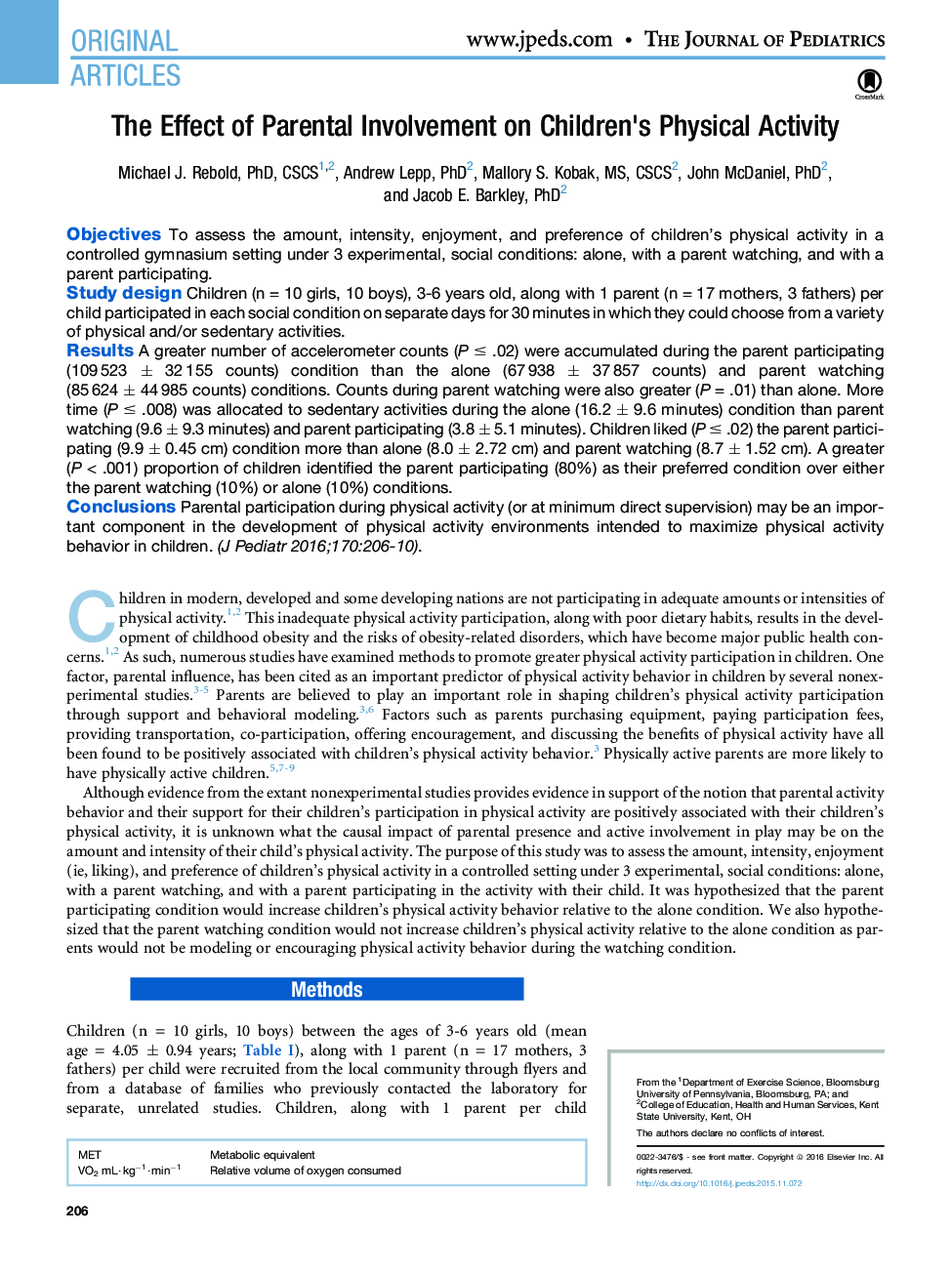| Article ID | Journal | Published Year | Pages | File Type |
|---|---|---|---|---|
| 6219133 | The Journal of Pediatrics | 2016 | 5 Pages |
ObjectivesTo assess the amount, intensity, enjoyment, and preference of children's physical activity in a controlled gymnasium setting under 3 experimental, social conditions: alone, with a parent watching, and with a parent participating.Study designChildren (n = 10 girls, 10 boys), 3-6 years old, along with 1 parent (n = 17 mothers, 3 fathers) per child participated in each social condition on separate days for 30 minutes in which they could choose from a variety of physical and/or sedentary activities.ResultsA greater number of accelerometer counts (P â¤Â .02) were accumulated during the parent participating (109â523 ± 32â155 counts) condition than the alone (67â938 ± 37â857 counts) and parent watching (85â624 ± 44â985 counts) conditions. Counts during parent watching were also greater (P = .01) than alone. More time (P â¤Â .008) was allocated to sedentary activities during the alone (16.2 ± 9.6 minutes) condition than parent watching (9.6 ± 9.3 minutes) and parent participating (3.8 ± 5.1 minutes). Children liked (P â¤Â .02) the parent participating (9.9 ± 0.45 cm) condition more than alone (8.0 ± 2.72 cm) and parent watching (8.7 ± 1.52 cm). A greater (P < .001) proportion of children identified the parent participating (80%) as their preferred condition over either the parent watching (10%) or alone (10%) conditions.ConclusionsParental participation during physical activity (or at minimum direct supervision) may be an important component in the development of physical activity environments intended to maximize physical activity behavior in children.
